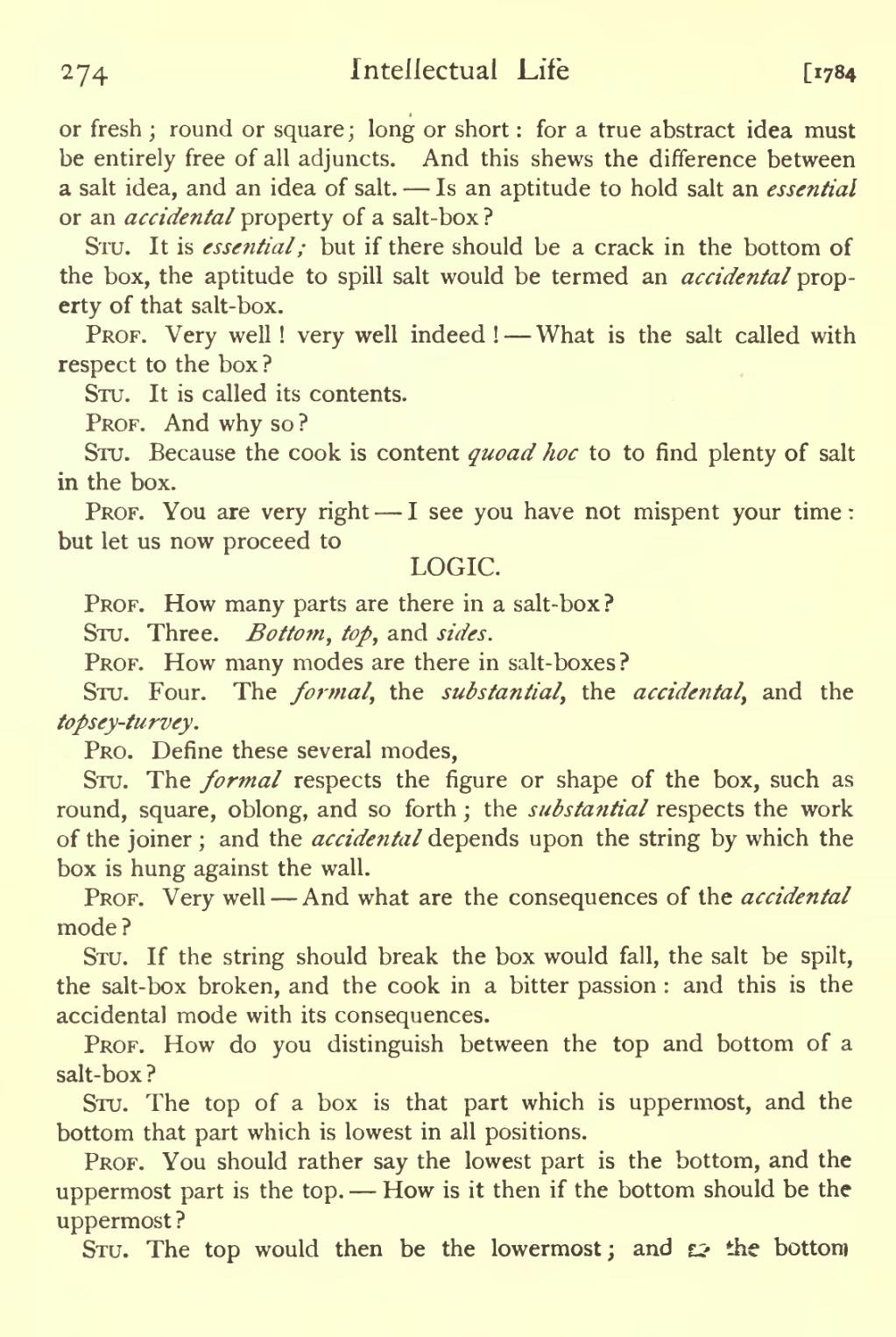or fresh ; round or square; long or short : for a true abstract idea must be entirely free of all adjuncts. And this shews the difference between a salt idea, and an idea of salt. — Is an aptitude to hold salt an essential or an accidental property of a salt-box?
Stu. It is essential ; but if there should be a crack in the bottom of the box, the aptitude to spill salt would be termed an accidental property of that salt-box.
Prof. Very well ! very well indeed ! — What is the salt called with respect to the box?
Stu. It is called its contents.
Prof.And why so?
Stu. Because the cook is content quoad hoc to to find plenty of salt
in the box.
Prof. You are very right — I see you have not mispent your time : but let us now proceed to
LOGIC.
Prof. How many parts are there in a salt-box?
Stu. Three. Bottom, top, and sides.
Prof. How many modes are there in salt-boxes?
Stu. Four. The formal, the substantial, the accidental and the topsey-turvey.
Pro. Define these several modes,
Stu. The formal respects the figure or shape of the box, such as round, square, oblong, and so forth ; the substantial respects the work of the joiner ; and the accidental depends upon the string by which the box is hung against the wall.
Prof. Very well — And what are the consequences of the accidental mode?
Stu. If the string should break the box would fall, the salt be spilt, the salt-box broken, and the cook in a bitter passion : and this is the accidental mode with its consequences.
Prof. How do you distinguish between the top and bottom of a salt-box?
Stu. The top of a box is that part which is uppermost, and the bottom that part which is lowest in all positions.
Prof. You should rather say the lowest part is the bottom, and the uppermost part is the top. — How is it then if the bottom should be the uppermost?
Stu. The top would then be the lowermost; and the bottom

